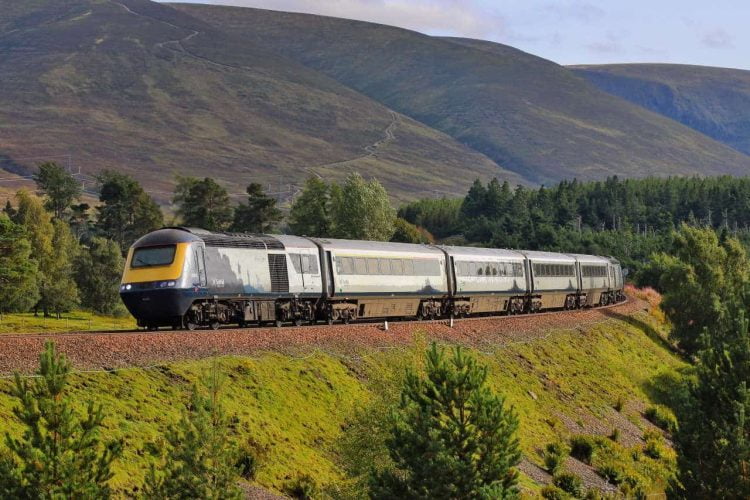After four years work and a £34m investment, Network Rail with its contractor Story have completed a mammoth task to protect 50 railway bridges in Scotland against damage caused by scouring of the river bed.
Scouring of river beds happens when a bridge is built in fast-flowing water, and causes damage to the bridge structure by eroding material around the bridge foundations. over the last 100 years, scouring has become responsible as the main reason for restrictions being placed on lines across the bridges.

Because of the nature of the work, much of it has needed to be carried out in river itself, using a portable dam system that is installed at each bridge to reduce the flow of the river. Once the dam was in place, a scour mattress was laid on the riverbed and its pockets were filled with concrete. Material that had been removed from the original riverbed was then used to cover the mattress so that the riverbed effectively resembles what it looked like before work started.

Most of the bridges covered by the work were built in Victorian times. The improvements following this work and a wider programme of maintenance will greatly extend their life, as well as protecting them against weather damage.

The last bridge to be completed was Inver Viaduct over the River Braan in Dunkeld, which carries passenger and freight services on the Highland Mainline. Over the last two years the line over the viaduct has had to be closed three times because the river had breached safe levels resulting in a disruption of services.
WATCH: Video of Alex Hynes, managing director of Scotland’s Railway, talking work at Inver Viaduct
Alex Hynes, managing director of Scotland’s Railway, said: “We have a responsibility to make sure assets that play such a vital role on our network are maintained to help minimise the impact of rising water levels during extreme weather, allowing us to keep trains running.
“This is all part of our commitment to dealing with the impact of climate change on Scotland’s Railway. The team has done a superb job in delivering this vital work, it’ll help further improve the operational resilience, safety, and performance of the railway for our customers.”
Jeremy Spence, Route Delivery Director, said: “Scour protection can be one of the more challenging elements of our renewals programme, as it involves working from river level much of the time and often in areas with challenging topography that can make access difficult for our teams.
“This has been a huge undertaking by the team since the work started in 2019 and it’s great to see the successful completion of all 50 structures. The collaborative effort by Network Rail and Story has not only delivered this project on time but means we won’t need to carry out repairs on this scale for many years to come.”






Responses